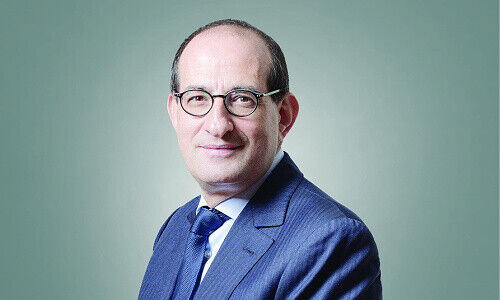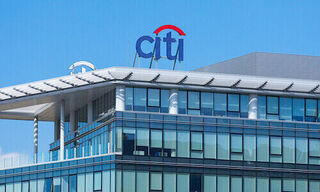The final countdown is underway. In less than six months, on 1 January 2022, the world of finance will enter a new era, Philip Adler writes in an essay for finews.first
This article is published on finews.first, a forum for authors specialized in economic and financial topics.
Libor (London Interbank Offered Rate) is used as a benchmark for most financial instruments such as loans, bonds, derivatives and structured products and has reigned supreme for more than three decades. However, the euro, franc, sterling and yen versions of Libor will no longer be published from the start of next year, although the dollar version will survive until 2023 for its most common maturities.
Libor rates have lost credibility because of the manipulation they have suffered and the decline of the interbank market. They will be replaced by new benchmark risk-free rates known as Alternative Reference Rates or ARRs. These are regarded as more reliable and robust by the Financial Stability Board, which is overseeing this international reform.
«To revolutionise benchmarks looked like an almost insurmountable challenge when it got underway in 2014»
Whereas Libor was based on estimates made by a panel of banks, ARRs are calculated on the basis of actual transactions. Because of the complexity and amounts involved – in mid-2018, there were $400,000 billion of contracts linked to various Libor rates – this attempt to revolutionise benchmarks looked like an almost insurmountable challenge when it got underway in 2014.
However, although some uncertainties remain, the finance industry has made extensive preparations for the great leap forward. It has done so in a spirit of international co-ordination that is rarely seen, although preparedness varies between countries. At the national level, the reform has been guided by working groups bringing together central banks, regulators and industry representatives.
It has consisted of several major projects, such as identifying the new ARR, renegotiating existing contracts to adjust them to the new benchmark and adopting that benchmark for new contracts.
«Japan still has work to do»
The U.K. seems set for a smooth transition on 1 January. SONIA (Sterling Overnight Index Average), which will replace Libor, is already widely used in the bond and derivatives markets. New sterling-denominated contracts and products stopped being linked to Libor in spring 2021. The eurozone is also ready to replace some of its benchmark rates, although it will keep its main one – Euribor – having revised its calculation method. €STR (Euro Short-Term Rate), which was launched in 2019, will replace Eonia (Euro Overnight Index Average).
Japan still has work to do. «There is only limited time left,» warned a Bank of Japan official recently, alarmed by the slow progress made by financial institutions in converting Libor-linked products to one of the three alternatives being considered, including TORF (Tokyo Term Risk Free Rate), launched in early 2021.
The transition is also making a lot of people nervous in the U.S. To give market participants more time to renegotiate existing contracts, US-dollar Libor will continue to be published until mid-2023, although regulators are demanding that new contracts stop referring to it from the end of 2021.
«The situation appears to be better in Switzerland»
SOFR (Secured Overnight Financing Rate), published by the New York Federal Reserve, has been chosen as the new benchmark. However, it will see competition from well-established benchmarks such as the Fed Funds and Overnight Index rates. Many people, including Treasury Secretary Janet Yellen, have called for those concerned to ensure a more orderly transition.
The situation appears to be better in Switzerland, where preparations for the post-Libor era are progressing according to the Finma roadmap. Switzerland already had a benchmark with a solid history of liquidity in the form of SARON (Swiss Average Rate Overnight). SARON, created in the aftermath of the 2008 crisis, reflects the terms of overnight transactions in the money market, and is the logical successor to Libor. It has been adopted by all banks, and on 30 June became the benchmark for all new contracts.
«There is no clear front-runner»
Preparations for 1 January, however rigorous they have been, have not been enough to dispel all doubts. Unlike Libor, which is calculated for maturities ranging from one day to one year, the new benchmarks are backward-looking, and this has forced banks to develop costly techniques to ensure that their clients still have access to rates that are known in advance.
In addition, since ARRs only reflect «risk-free» short-term transactions and so do not take into account liquidity and counterparty risks (unlike Libor), the industry will have to learn how to factor these risks back into the cost of credit. Various benchmarks have been created for that purpose (Bloomberg Short Term Bank Yield Index, American Interbank Offered Rate, IHS Markit USD Credit Inclusive Term Rate, etc.), but there is no clear front-runner among them.
«It is therefore impossible to say which benchmarks will come out on top»
Finally, the finance industry will have to juggle rates that are difficult to compare. Countries like Switzerland have opted for an ARR based on secured loans, while others have not. It is therefore impossible to say which benchmarks will come out on top for the financing of international commercial transactions (trade finance or syndicated loans), an area in which Libor used to be the undisputed leader.
The industry must therefore expect to go through an adjustment phase, in which new standards will emerge. As in any period of change, this will involve learning from experience.
Philip Adler is the Global Head of Treasury & Trading at Geneva-based Union Bancaire Privée.
Previous contributions: Rudi Bogni, Peter Kurer, Rolf Banz, Dieter Ruloff, Werner Vogt, Walter Wittmann, Alfred Mettler, Robert Holzach, Craig Murray, David Zollinger, Arthur Bolliger, Beat Kappeler, Chris Rowe, Stefan Gerlach, Marc Lussy, Nuno Fernandes, Richard Egger, Maurice Pedergnana, Marco Bargel, Steve Hanke, Urs Schoettli, Ursula Finsterwald, Stefan Kreuzkamp, Oliver Bussmann, Michael Benz, Albert Steck, Martin Dahinden, Thomas Fedier, Alfred Mettler, Brigitte Strebel, Mirjam Staub-Bisang, Nicolas Roth, Thorsten Polleit, Kim Iskyan, Stephen Dover, Denise Kenyon-Rouvinez, Christian Dreyer, Kinan Khadam-Al-Jame, Robert Hemmi, Anton Affentranger, Yves Mirabaud, Katharina Bart, Frédéric Papp, Hans-Martin Kraus, Gerard Guerdat, Mario Bassi, Stephen Thariyan, Dan Steinbock, Rino Borini, Bert Flossbach, Michael Hasenstab, Guido Schilling, Werner E. Rutsch, Dorte Bech Vizard, Adriano B. Lucatelli, Katharina Bart, Maya Bhandari, Jean Tirole, Hans Jakob Roth, Marco Martinelli, Thomas Sutter, Tom King, Werner Peyer, Thomas Kupfer, Peter Kurer, Arturo Bris, Frederic Papp, James Syme, Dennis Larsen, Bernd Kramer, Ralph Ebert, Armin Jans, Nicolas Roth, Hans Ulrich Jost, Patrick Hunger, Fabrizio Quirighetti, Claire Shaw, Peter Fanconi, Alex Wolf, Dan Steinbock, Patrick Scheurle, Sandro Occhilupo, Will Ballard, Nicholas Yeo, Claude-Alain Margelisch, Jean-François Hirschel, Jens Pongratz, Samuel Gerber, Philipp Weckherlin, Anne Richards, Antoni Trenchev, Benoit Barbereau, Pascal R. Bersier, Shaul Lifshitz, Klaus Breiner, Ana Botín, Martin Gilbert, Jesper Koll, Ingo Rauser, Carlo Capaul, Claude Baumann, Markus Winkler, Konrad Hummler, Thomas Steinemann, Christina Boeck, Guillaume Compeyron, Miro Zivkovic, Alexander F. Wagner, Eric Heymann, Christoph Sax, Felix Brem, Jochen Moebert, Jacques-Aurélien Marcireau, Ursula Finsterwald, Claudia Kraaz, Michel Longhini, Stefan Blum, Zsolt Kohalmi, Karin M. Klossek, Nicolas Ramelet, Søren Bjønness, Andreas Britt, Gilles Prince, Darren Willams, Salman Ahmed, Stephane Monier, and Peter van der Welle, Ken Orchard, Christian Gast, Jeffrey Bohn, Juergen Braunstein, Jeff Voegeli, Fiona Frick, Stefan Schneider, Matthias Hunn, Andreas Vetsch, Fabiana Fedeli, Marionna Wegenstein, Kim Fournais, Carole Millet, Ralph Ebert, Swetha Ramachandran, Brigitte Kaps, Thomas Stucki, Neil Shearing, Claude Baumann, Tom Naratil, Oliver Berger, Robert Sharps, Tobias Mueller, Florian Wicki, Jean Keller, Niels Lan Doky, Karin M. Klossek, Ralph Ebert, Johnny El Hachem, Judith Basad, Katharina Bart, Thorsten Polleit, Bernardo Brunschwiler, Peter Schmid, Karam Hinduja, Zsolt Kohalmi, Raphaël Surber, Santosh Brivio, Gérard Piasko, Mark Urquhart, Olivier Kessler, Bruno Capone, Peter Hody, Lars Jaeger, Andrew Isbester, Florin Baeriswyl, and Michael Bornhaeusser, Agnieszka Walorska, Thomas Mueller, Ebrahim Attarzadeh, Marcel Hostettler, Hui Zhang, Michael Bornhaeusser, Reto Jauch, Angela Agostini, Guy de Blonay, Tatjana Greil Castro, Jean-Baptiste Berthon, Marc Saint John Webb, Dietrich Goenemeyer, Mobeen Tahir, Didier Saint-Georges, Serge Tabachnik, Rolando Grandi, Vega Ibanez, Beat Wittmann, David Folkerts-Landau, Andreas Ita, Teodoro Cocca, Michael Welti, Mihkel Vitsur, Fabrizio Pagani, Roman Balzan, Todd Saligman, Christian Kaelin, Stuart Dunbar, Fernando Fernández, Lars Jaeger, Carina Schaurte, and Birte Orth-Freese, Gun Woo, and Lamara von Albertini.























